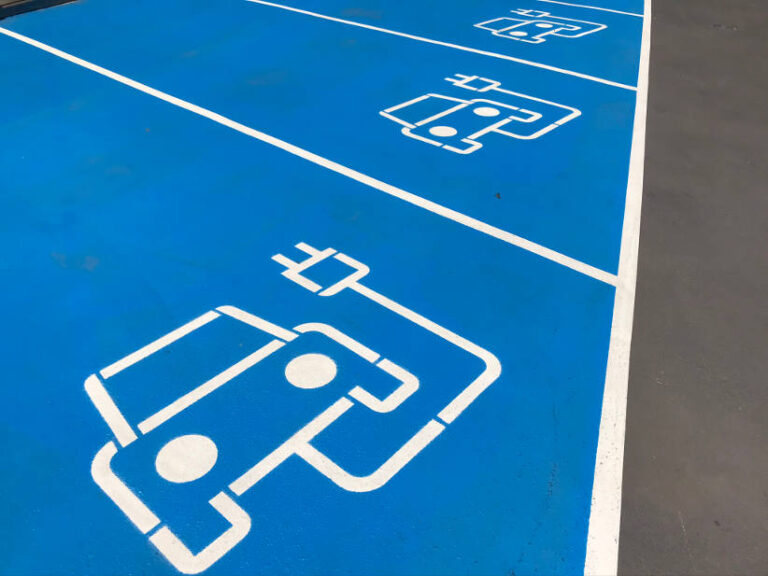The transition to electric vehicles (EVs) in Australian fleets is accelerating, with organisations like Anglican Diocesan Services (ADS) leading the way in demonstrating how structured change management can drive sustainability and cost savings. Speaking on a panel organised by Origin Energy at the Everything Electric show in Sydney during March, Mark Trainor, Director of Asset Management at ADS, shared insights into the organisation’s EV transition journey, the challenges faced, and the lessons learned along the way.
A Strategic Commitment to Sustainability
ADS, which manages a fleet of over 330 vehicles spanning from southern Sydney to the Victorian border, began its EV transition journey three years ago. Rather than a fragmented approach, the organisation took a holistic and structured path to decarbonisation.
“We basically supported and looked at it from a holistic point of view,” Trainor explained. “Three years ago, we put together a Climate Action Plan Committee to drive and underpin the direction we were going organisationally, and that was a key foundation block of adopting EVs.”
This committee played a pivotal role in gaining buy-in from all ADS agencies and members, ensuring the shift to EVs was aligned with the organisation’s broader sustainability and operational goals.
Rolling Out the EV Fleet: A Phased Approach
ADS took a staged approach to its EV rollout, beginning with a pilot program of just two electric vehicles. This initial phase allowed the team to test processes, refine policies, and identify challenges before scaling up.
“We started with two vehicles, and from there, we gathered learnings on how we were going to roll out EVs on a bigger scale,” Trainor said.
“One of the key things was our change management plan, which was a crucial piece of work. We had to ensure that drivers understood the transition, and we still do a lot of one-on-one driver training to take them through the process.”
As ADS expanded its EV fleet, it maintained a strong focus on data-driven decision-making. By closely monitoring fleet usage patterns and carbon emissions, the team could clearly demonstrate the environmental and financial benefits of the transition.
“In the beginning, we were at about 42 tonnes of carbon emissions per month. Today, that figure has dropped to 24 tonnes per month. When you put hard data up there, it’s indisputable,” Trainor noted.
Tackling the Home Charging Challenge
A significant focus of ADS’s EV transition has been enabling home charging for fleet drivers, as many employees take vehicles home overnight. To address concerns over reimbursement and electricity costs, ADS partnered with Origin Energy to deploy a smart charging solution.
“We specifically targeted take-home vehicles as the first wave of EV adoption,” Trainor said. “One of the key challenges was ensuring fair reimbursement for electricity usage at employees’ homes. We installed 24-26 home chargers that are equipped with SIM cards to track charging usage.”
Through this system, ADS can accurately measure electricity consumption and automatically reimburse employees through their home electricity accounts.
“This approach ensures charging is done at home, where rates are lower—21 cents per kWh in our case. Charging a 70kWh battery costs around $14, which is significantly cheaper than public charging or refuelling a petrol vehicle,” Trainor explained.
Driving Cultural Change in Fleet Management
One of the biggest hurdles in any fleet transition is shifting driver behaviour and perceptions. Many employees, especially those accustomed to internal combustion engine (ICE) vehicles, may initially be resistant to EVs due to concerns about range anxiety and charging infrastructure.
ADS tackled this challenge through ongoing driver engagement, training, and communication.
“I personally sit down with drivers, take them through the EV, show them the charging process, and we do an introduction drive together,” Trainor said. “We also integrate EV transition updates into internal leadership forums and staff communications, ensuring that everyone stays informed and engaged.”
By continually reinforcing the operational and cost-saving benefits, ADS has successfully built employee confidence in EVs, easing the transition.
The Role of Data and Telematics
Data and telematics have played a critical role in ADS’s fleet transition strategy.
“We use telematics data to track how our fleet operates,” Trainor explained. “Most of our drivers travel less than 100km per day, so range anxiety really isn’t a significant issue. In fact, around 80-90% of our charging happens at home, which reduces our reliance on public charging.”
By leveraging real-world data, ADS has been able to debunk common EV myths, refine charging policies, and optimise fleet efficiency.
Key Takeaways for Other Fleets
ADS’s EV transition journey provides valuable lessons for other organisations looking to electrify their fleets:
- Start with a strong policy foundation – A clear Climate Action Plan ensures alignment across the organisation.
- Pilot the transition before scaling up – Small-scale rollouts help to identify and address challenges early.
- Prioritise driver engagement – Training, education, and change management are key to overcoming resistance.
- Leverage home charging – A structured home charging reimbursement policy can make EVs more practical and cost-effective.
- Use data to guide decisions – Telematics and emissions tracking provide clear proof of the transition’s success.
Looking Ahead: Scaling Up ADS’s EV Transition
Looking to 2025 and beyond, ADS plans to expand its EV adoption, further refine its policies, and continue working with industry stakeholders and government agencies to improve infrastructure.
“We’ll continue working with our peer stakeholders, boards, and agency heads to gain top-level buy-in,” Trainor said. “We’ll also focus on deploying more home and depot chargers and refining our action plan to keep pace with the evolving EV landscape.”
ADS’s journey proves that structured planning, strong leadership, and a commitment to change management can make the transition to EVs a reality—delivering cost savings, lower emissions, and an enhanced employee experience.
With more organisations following in ADS’s footsteps, Australia’s fleet electrification momentum is only set to grow.






